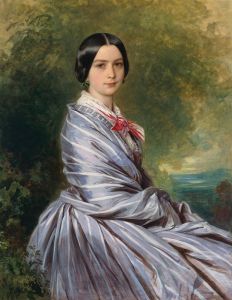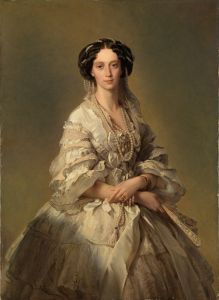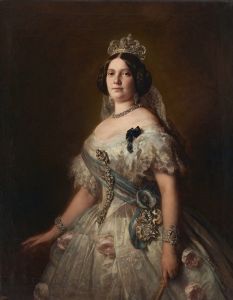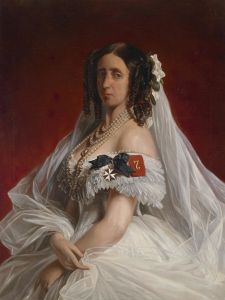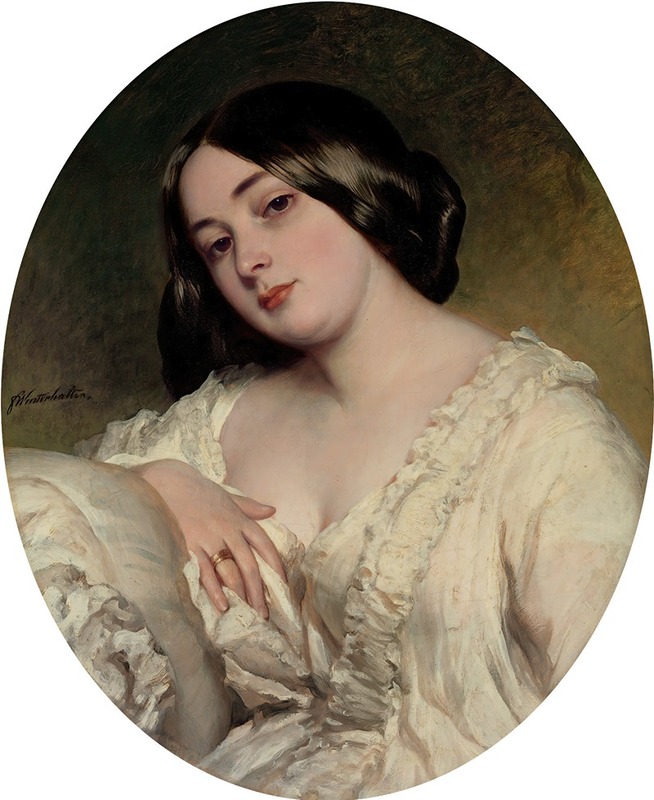
Portrait of a lady
A hand-painted replica of Franz Xaver Winterhalter’s masterpiece Portrait of a lady, meticulously crafted by professional artists to capture the true essence of the original. Each piece is created with museum-quality canvas and rare mineral pigments, carefully painted by experienced artists with delicate brushstrokes and rich, layered colors to perfectly recreate the texture of the original artwork. Unlike machine-printed reproductions, this hand-painted version brings the painting to life, infused with the artist’s emotions and skill in every stroke. Whether for personal collection or home decoration, it instantly elevates the artistic atmosphere of any space.
Franz Xaver Winterhalter was a renowned 19th-century German painter known for his flattering portraits of royalty and upper-class society across Europe. Among his extensive body of work, "Portrait of a Lady" is one of the many pieces that exemplify his skill in capturing the elegance and grace of his subjects. However, due to the prolific nature of Winterhalter's career and the commonality of the title, "Portrait of a Lady," it is essential to specify which particular painting is being referred to, as there are multiple works with similar titles attributed to him.
Winterhalter was born on April 20, 1805, in the small village of Menzenschwand in Germany's Black Forest region. He initially trained as a lithographer before moving to Munich to study painting. His career took a significant turn when he moved to Paris in 1834, where he quickly gained popularity among the aristocracy. Winterhalter became a favorite portraitist for many European courts, including those of France, England, and Russia.
His portraits are characterized by their refined elegance, attention to detail, and the ability to capture the luxurious fabrics and intricate details of his subjects' attire. Winterhalter's work often emphasized the idealized beauty and sophistication of his sitters, which made him particularly popular among the nobility who sought to be portrayed in the most favorable light.
The specific "Portrait of a Lady" in question could refer to any number of Winterhalter's works, as he painted numerous portraits of women throughout his career. These portraits typically feature women dressed in the height of contemporary fashion, often set against lush, opulent backgrounds that highlight their status and elegance. Winterhalter's ability to render textures, such as silk and lace, with remarkable realism is a hallmark of his style.
Winterhalter's portraits were not only admired for their aesthetic qualities but also for their ability to convey the personality and status of the sitter. His works were commissioned by many prominent figures of the time, including Empress Eugénie of France, Queen Victoria of the United Kingdom, and Empress Elisabeth of Austria, among others. These commissions solidified his reputation as one of the leading portraitists of his era.
Despite his success, Winterhalter's work was sometimes criticized for its perceived lack of depth and overly flattering portrayal of his subjects. However, his ability to capture the zeitgeist of 19th-century European aristocracy has ensured his continued recognition and appreciation in the art world.
In summary, while "Portrait of a Lady" by Franz Xaver Winterhalter could refer to several different works, each painting would exemplify his signature style of elegance, attention to detail, and the idealized portrayal of his subjects. Winterhalter remains a significant figure in the history of portrait painting, celebrated for his contributions to capturing the essence of 19th-century European nobility.






